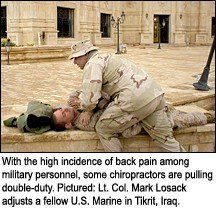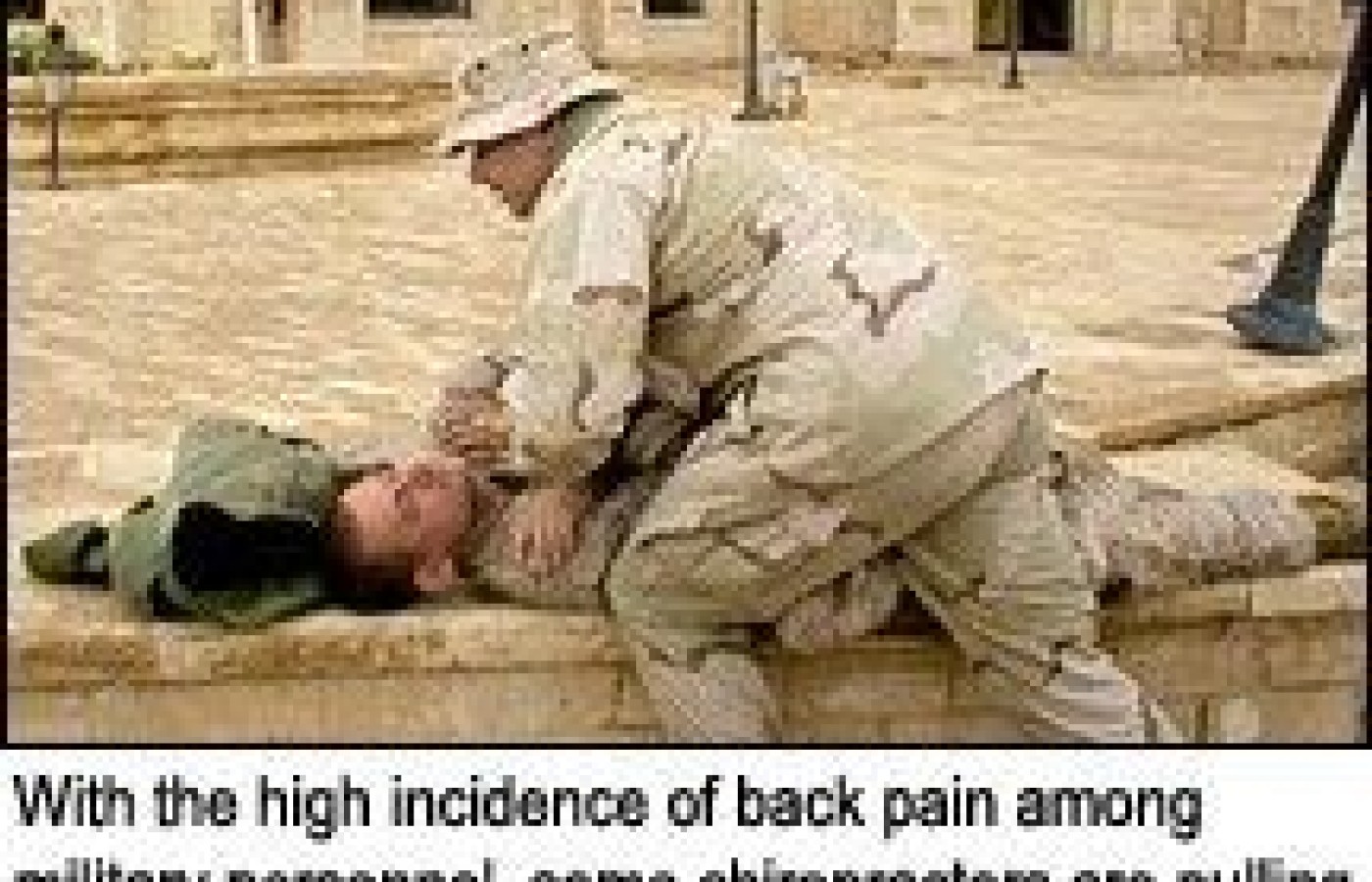You became a chiropractor to serve people, not an insurance company. You deserve to run a business that aligns with your values, supports your family and lights you up. Cash-based care isn’t just a pricing model – it’s a philosophy rooted in freedom, trust and respect for your patients and for yourself. Here's why - and how - to do it.
Soldiers Need Chiropractors More Than Army Surgeons
Wars have been fought, for one reason or another, since the beginning of recorded history. While the methods of warfare have changed significantly over time, the type and degree of injury these methods inflict have remained frighteningly constant. Surprisingly, research suggests a major cause of attrition (a reduction in number or strength) among military personnel in recent wars has been due not to injuries incurred on the battlefield, but rather to more typical conditions such as accidents and musculoskeletal complaints.
In an effort to determine what types of painful conditions affect solders during wartime, researchers in the United States and Germany examined 162 soldiers who had been engaged in Operation Iraqi Freedom (OIF) and had been evacuated to pain treatment centers outside the theater of combat. Results of the study, published in the journal Anesthesia & Analgesia, show that many of the injuries suffered by military personnel during conflict are quite similar to those that would have been sustained by people in the civilian sector.

All of the soldiers observed in the study had incurred their injuries during OIF between March 2003 and June 2004. They were medically evacuated and seen at one of two facilities: Walter Reed Army Medical Center in Bethesda, Md., and Landstuhl Regional Army Medical Center in Landstuhl, Germany. Most of the injured soldiers received "consultations for treatment recommendations to be implemented at military treatment facilities located at the patient's home duty station."
Analysis of the complaints showed that most of the soldiers incurred injuries comparable to those that would have been sustained by similarly aged civilians. Not surprisingly, more than half (53 percent) of the pain complaints reported by the solders involved lumbar radicular pain and axial low back pain. The second most common complaint was "nonradicular extremity pain," which accounted for 23 percent of the presenting complaints.
Many of the patients who reported suffering from low back pain could not identify a causative factor. Among those who could, however, heavy lifting, motor vehicle accidents and falls were implicated as the leading causes of injury.
Analysis of the complaints also showed that the most common diagnosis was lumbar herniated disk, "which accounted for almost one-quarter of all pain disorders." Second on the diagnosis list was postsurgical pain, experienced by 14 percent of all patients. When postsurgical pain was categorized by subgroups, the most frequently implicated diagnoses were lumbar failed back surgery and postherniorrhaphy pain, followed were lumbar failed back surgery and postherniorrhaphy pain, followed by failed neck surgery syndrome, post-thoracotomy pain and complex regional pain.
| Presenting Pain Complaints in Soldiers Injured in Operation Iraqi Freedom* | ||
| Pain Presentation (n=162) | Frequency | Percentage |
| Lumbar radicular pain | 49 | 30.2% |
| Axial low back pain | 37 | 22.8% |
| Nonradicular leg pain | 24 | 14.8% |
| Nonradicular arm pain | 16 | 9.9% |
| Groin pain | 15 | 9.3% |
| Thoracic pain | 10 | 6.2% |
| Neck pain | 10 | 6.2% |
| Abdominal pain | 8 | 4.9% |
| Cervical radicular pain | 6 | 3.7% |
| Headache | 6 | 3.7% |
| Thoracic radicular pain | 2 | 1.2% |
| Polyarthralgia | 1 | 0.6% |
| Facial pain | 1 | 0.6% |
| * The percentage of pain complaints is based on the number of patients (162), not the number of presenting symptoms (185). | ||
As might be expected, drugs were the most popular form of pain treatment, beginning with nonsteroidal anti-inflammatory drugs (NSAIDs), which were prescribed to 56 percent of patients. Opioids were prescribed to 49 percent of patients; 41 percent received "some type of neuropathic pain medication."
On the other hand, 17 percent of the injured soldiers were treated with some form of "alternative therapy." Massage therapy was provided to 13 soldiers (8 percent), followed by chiropractic (eight soldiers/4.9 percent) and acupuncture (two soldiers/1.2 percent).
The study pointed out that the number of non-battle-related injuries (NBIs) incurred during conflict can take a serious toll on troop strength in modern warfare. The authors note, "Among the 21,655 soldiers admitted to army hospitals in Southwest Asia during the Persian Gulf War, acute NBI comprised 25 percent of all hospitalizations, with musculoskeletal conditions ranking second at 13 percent."
Taking those numbers into account, this means that some 2,815 soldiers were hospitalized due to musculoskeletal complaints during the Gulf War. Given the large number of low back and other musculoskeletal injuries that are the norm in modern warfare, one has to wonder why doctors of chiropractic aren't playing a much larger role in the military.
Resources
- Cohen SP, Griffith S, Larkin TM, Villena F, Larkin R. Presentation, diagnoses, mechanisms of injury, and treatment of soldiers injured in Operation Iraqi Freedom: an epidemiological study conducted at two military pain management centers. Anesth Analg 2005;101:1098-1103.
- Hoeffler DF, Melton LJ. Changes in the distribution of Navy and Marine Corps casualties from World War I through the Vietnam conflict. Mil Med 1981;146:776-9.
- Writer JV, DeFraites RF, Keep LW. Non-battle injury casualties during the Persian Gulf War and other deployments. Am J Prev Med 2000;18:64-70.
- Harrison J. Chiropractic on the front line in Baghdad: Lt. Col. Mark Losack, USMC. Dynamic Chiropractic, May 19, 2003: www.chiroweb.com/archives/21/11/12.html.
- Herron A. Chiropractor helps comrades while on the lookout for insurgents. Dynamic Chiropractic, Sept. 14, 2005: www.chiroweb.com/archives/23/19/02.html.



